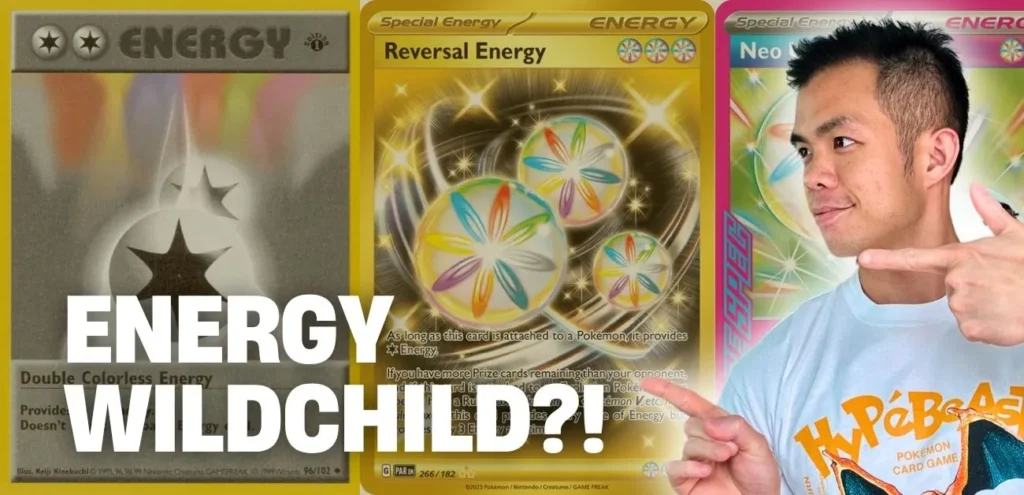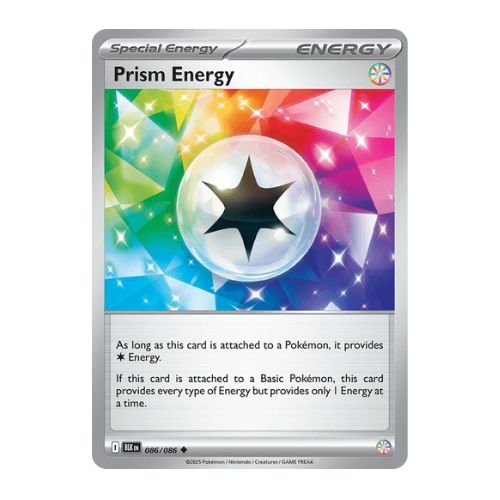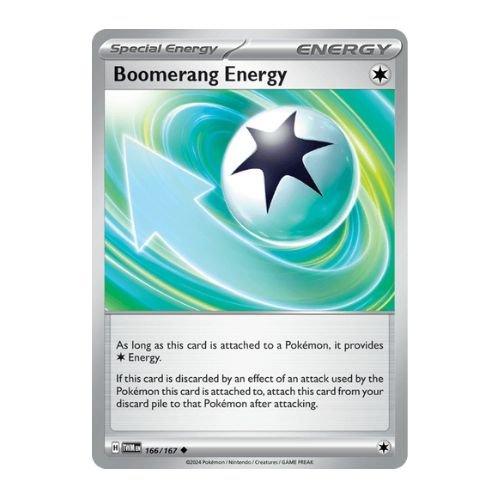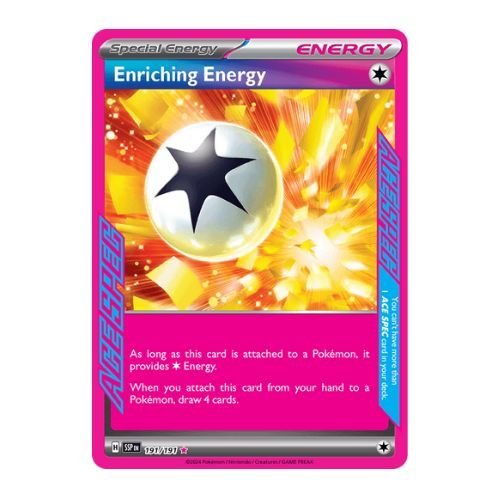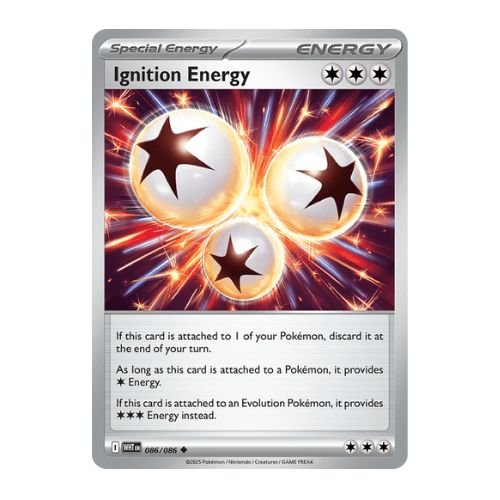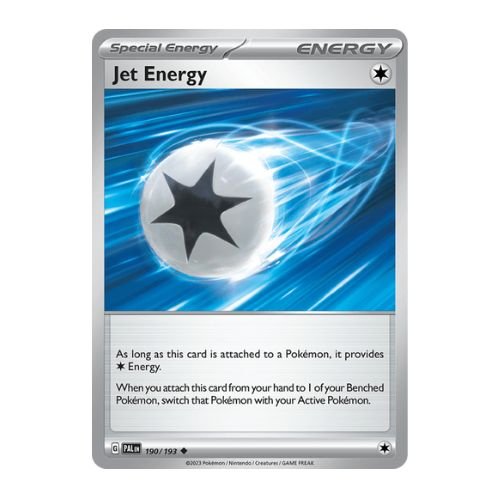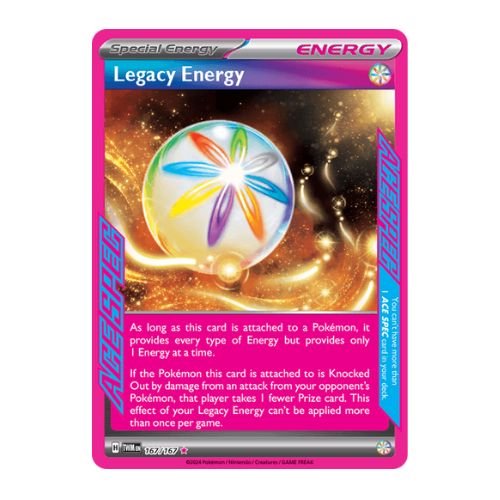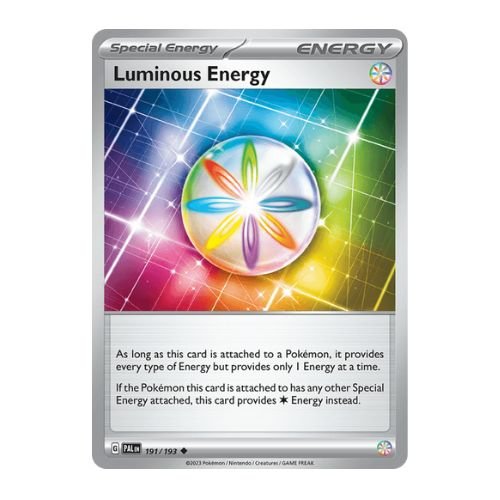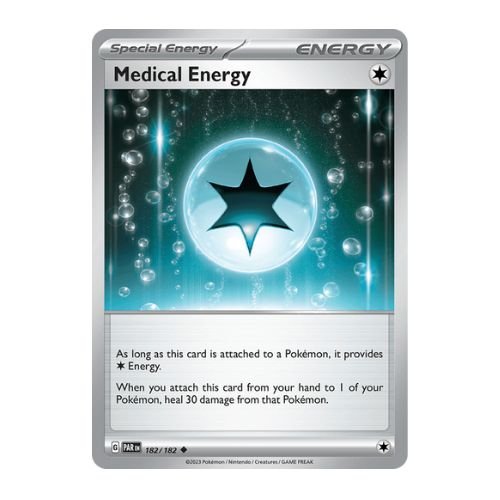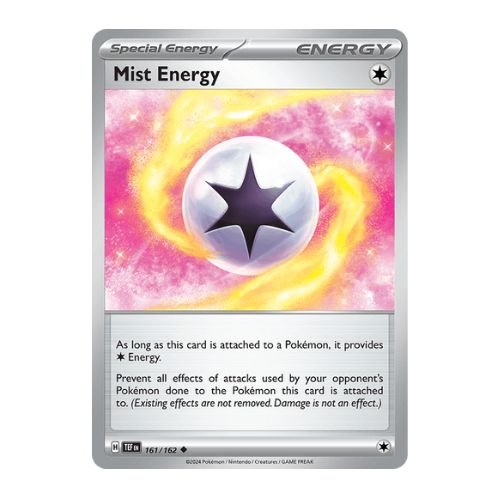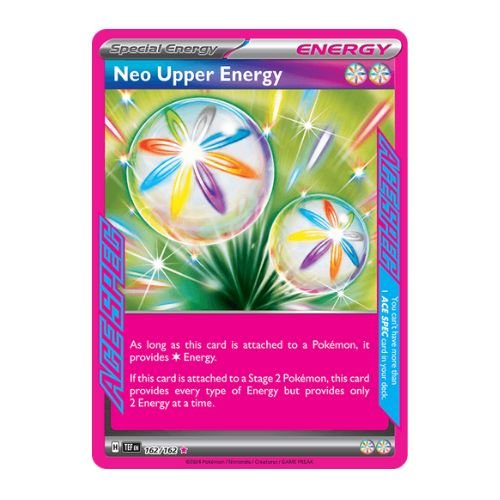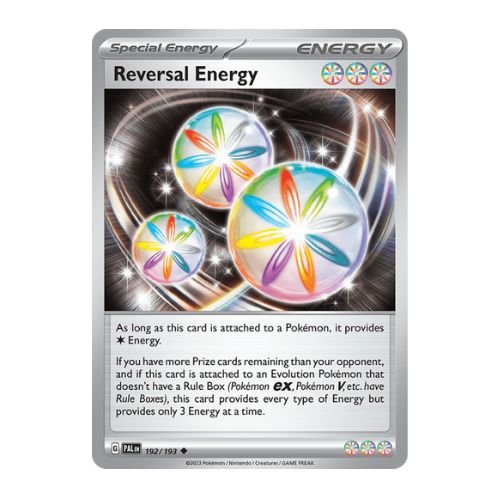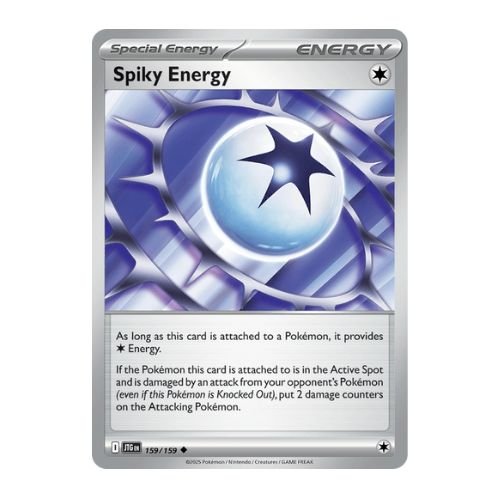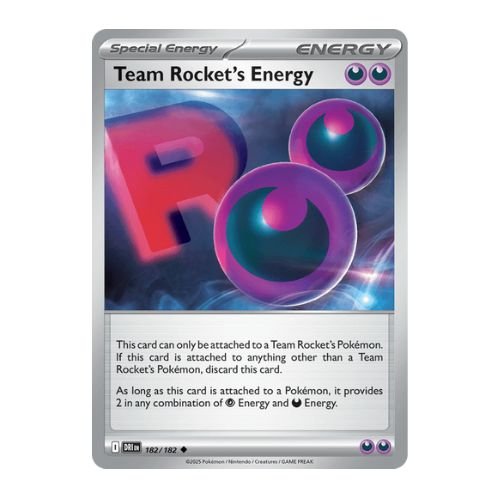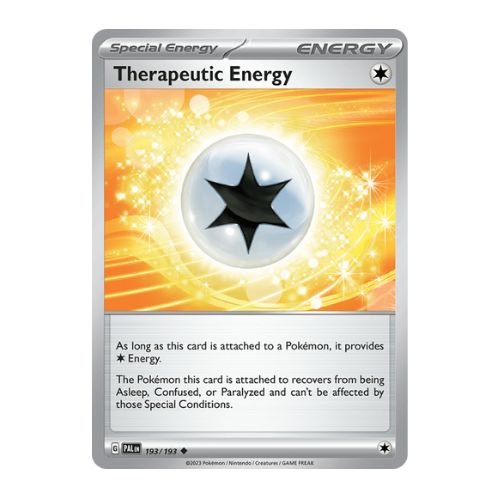Special Energy cards in Pokémon TCG supply energy to power attacks and provide extra effects unique to each card. Learn how they can play a role in supporting unique deck strategies that Basic Energy alone can’t offer.
Let’s talk about the wild child of Pokémon TCG Energies: Special Energy. You’ve seen them. You’ve probably played a few. Maybe you’ve even pulled some from booster packs.
But here’s the thing: Special Energy aren’t just “fancier Basic Energy”. It’s energy with serious benefits…and baggage if you don’t know how to use them.
This guide explains everything you need to know about Special Energy in Pokémon TCG- what they are, how to use them, and how much they’re worth.
Key Takeaways
What Is a Special Energy?
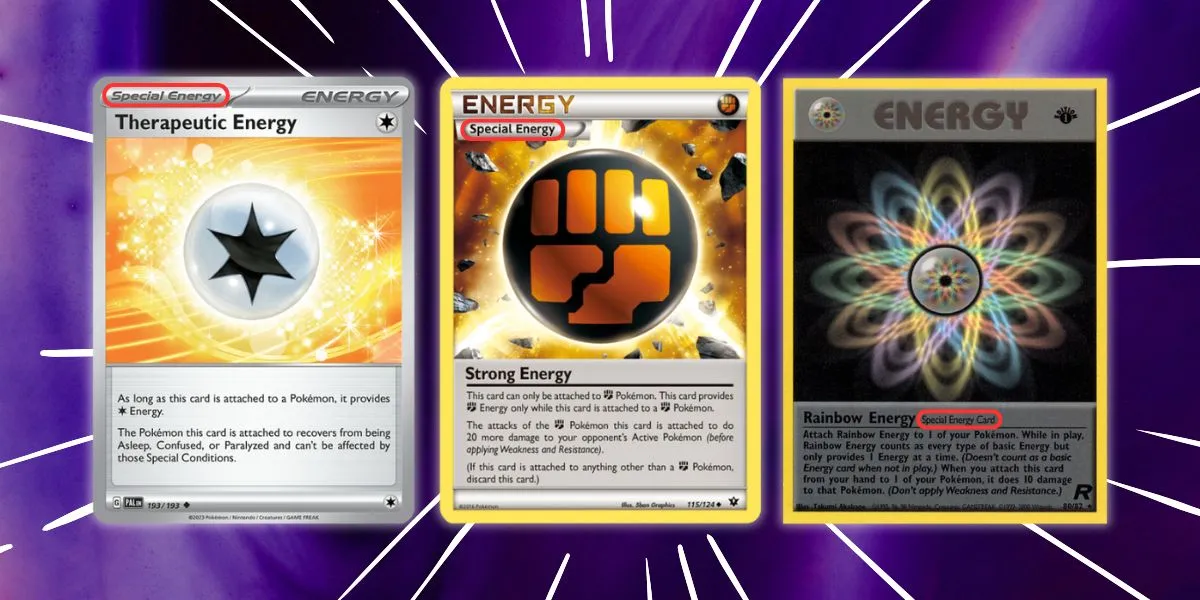
Special Energy are one of two types of Energy card– Basic Energy being the other. They can be easily identified by the “Special Energy” wording printed on the card. The location of the print has changed over the years, but it will always be clearly printed somewhere.
Unlike Basic Energy, Special Energy provide additional effects beyond powering attacks. Effects are always unique to each card. Examples include:
They are strategic tools- powerful when used right. But they also come with limitations.
You can only include up to four copies of a Special Energy with the same name in your deck. And some require certain conditions to be met before their effect is activated.
That’s in contrast to Basic energy, where you can slam 20 copies in your deck and each one always provides a single unit of Energy of a specified type.
Think of it like this:
Basic Energy is your reliable minivan. Gets the job done, no frills. Special Energy? That’s your tricked-out sports car. Faster, flashier, but a little more high-maintenance.
In competitive play, the right Special Energy can turbocharge your deck and some decks even rely on them to win.
Every Special Energy In The Current Format
Welcome to 2025, where only cards with the G, H, or I regulation marks can be used for competitive play.
Here is every Special Energy card that is currently legal in the Standard Format:
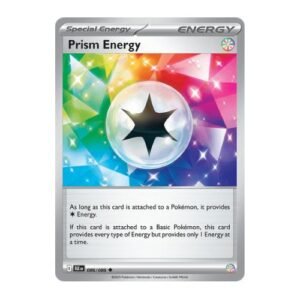
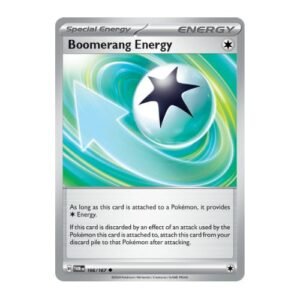
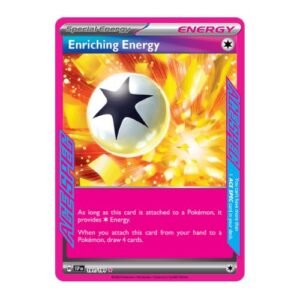
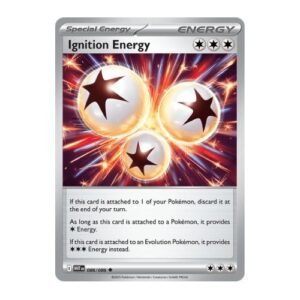
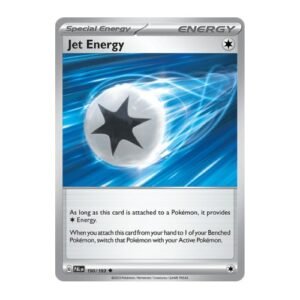
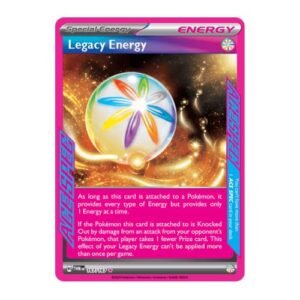
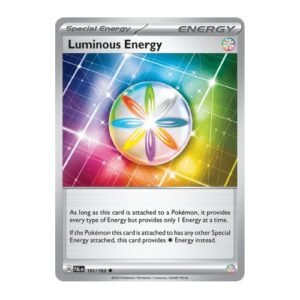
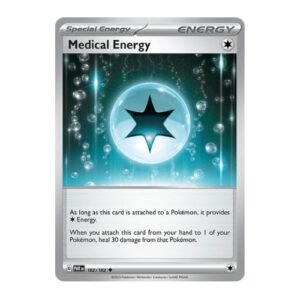
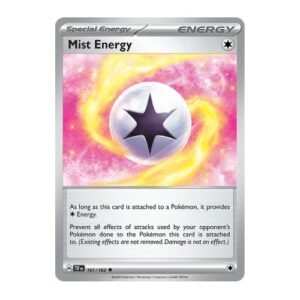
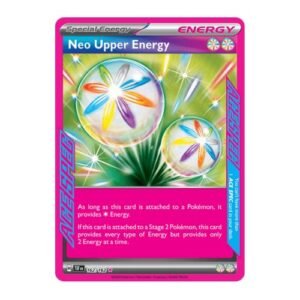
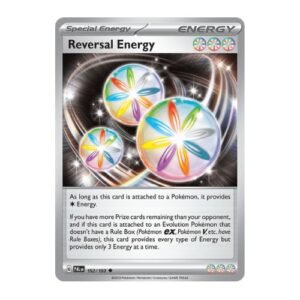
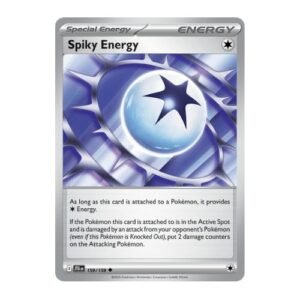
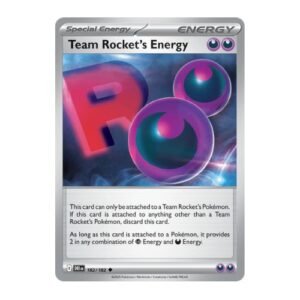
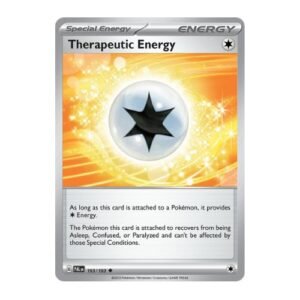
Rules For Using Special Energy
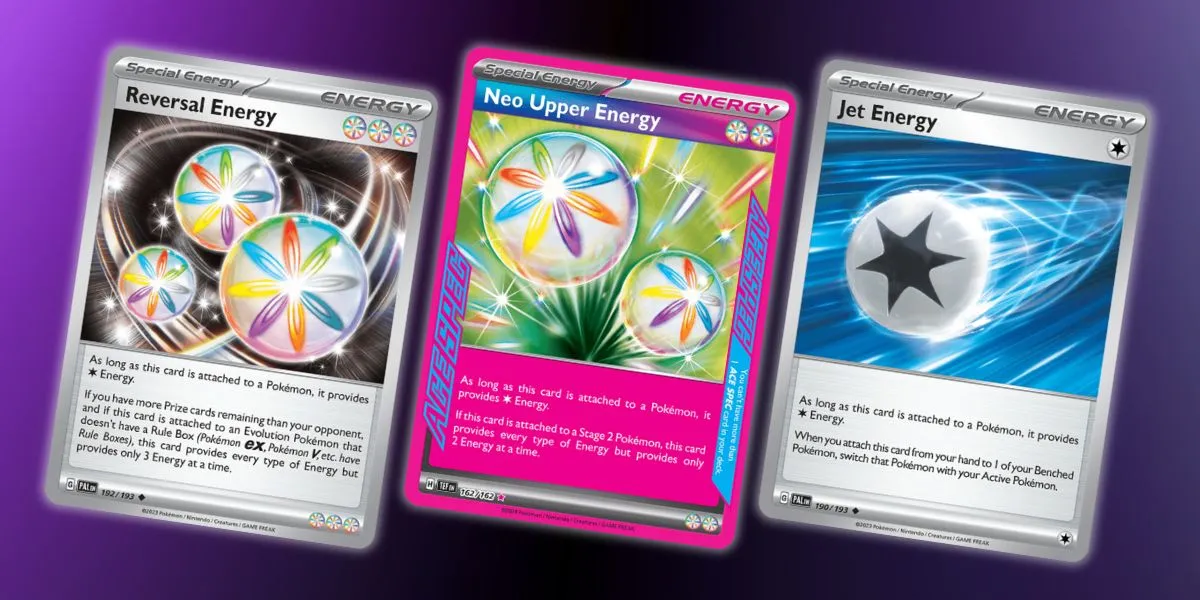
Special Energy follow the same basic rules for all Energy cards. But they come with a few extra caveats compared to Basic Energy.
Here are the rules for using Special Energy in Pokémon TCG:
Tips For Using Special Energy
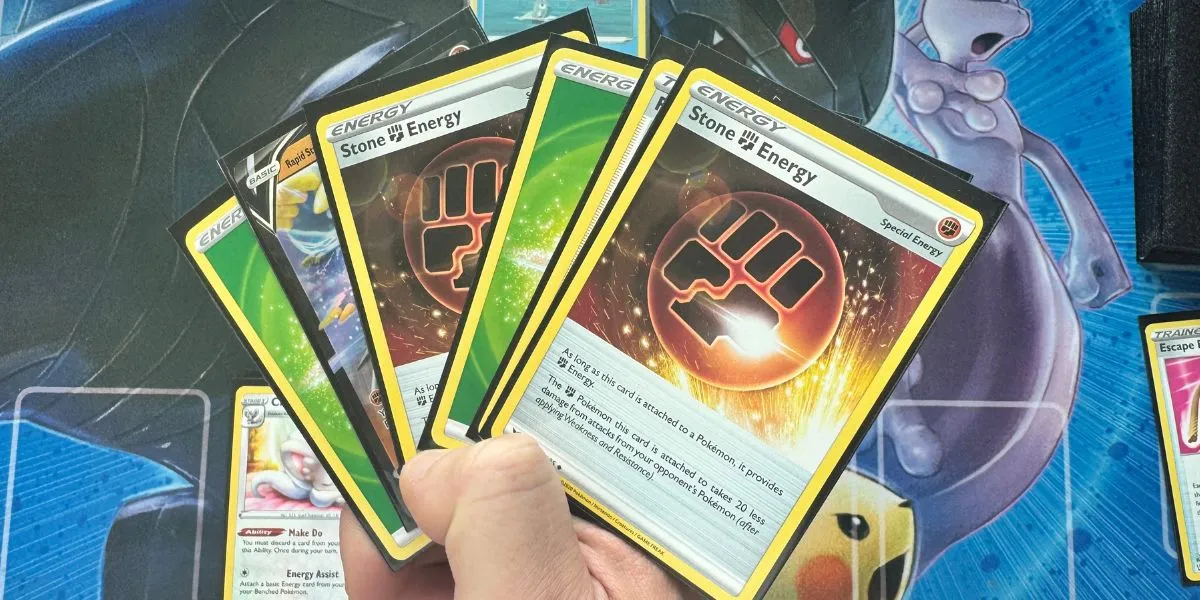
Alright, so you know what Special Energy cards are. You get that they’re limited, powerful, and not exactly plug-and-play.
Now the big question: When should you include them in your deck? How many should you run? And when should you toss it out like expired Moo Moo Milk?
Here are 5 tips to use them like a pro:
1) Find The Right Energy Ratio
Due to the 4-copy limitation rule, it can be difficult to dig Special Energy from your deck exactly when you need it during a game. That’s why you need to strike a balance between the power of Special Energy and the consistency of Basic Energy.
You want to power up your deck. Not make it unplayable.
A strong deck blends Special and Basic Energy like a cocktail. You don’t just pour in all the strong stuff- you mix it to taste.
A classic formula looks like this:
To further improve consistency, use search cards like Ultra Ball to thin your deck and increase the odds of drawing into your Special Energy. Combine this with draw cards (Professor’s Research, Marnie, etc) to dig through your deck.
Don’t forget to ask yourself: “What happens if two get prized or discarded early? Can your deck still function?”.
Have an emergency plan to make sure your deck is still playable in the worst case scenarios. The simplest way is to ensure you have enough Basic Energy to power your main attackers if your Special Energy gets Prized or discarded early.
2) Using Energy Acceleration For Consistency
Energy acceleration cards help you search and attach extra Energy beyond your usual once-per-turn attachment. They’re crucial for charging up your attackers fast and efficiently.
But here’s the thing: most energy acceleration effects only work with Basic energy. That doesn’t mean they can’t also help you find Special Energy though.
By pulling Basic Energy and thinning your deck in the early-game, you increase the chances of drawing into your Special Energy later.
Combine energy acceleration with a higher Special Energy count and a solid draw engine, and you’ll be able to consistently get that curcial card from your deck when you need it most.
3) Use Them To Tech The Meta
Even if your deck does not rely on Special Energy to run, it can help to add one or two as tech cards to counter specific matchups in the meta (common competitive strategies) or address any weaknesses in your deck.
Often 10- or 20-damage shy of key knockouts? Consider adding a Spiky Energy to apply chip damage to your opponent’s Pokémon. Are status condition decks running rampant in the meta? Therapeutic Energy shuts them down.
For the purpose of tech, you only need one or two of these Energies. They’re not your core strategy- they’re a backup plan. But when that moment comes? They’re a clutch that can give you the edge you need.
Just don’t overdo it.
4) Know When to Cut Them From Your Deck
Sometimes, the right move is saying goodbye. Here’s when to leave that Special Energy in the binder:
Rule of thumb: if a Special Energy doesn’t noticeably improve your deck or help you execute your core strategy, cut it. This doesn’t mean completely removing them from your deck. Play test and tweak to find the optimal number to remove.
5) Energy Counting & Prize Mapping
This is for pro-level deck-building. Here’s how skilled players think:
Step 1: Figure out how many energy attachments you need to win the game. Let’s say it’s 7 total
Step 2: How many of those do you want to be Special Energy? Maybe 3.
Step 3: What if one’s prized? Can you still win?
This math is what separates the champs from the chumps. Prize mapping your cards lets you factor in redundancy- or know when to go all in.
For example, if running 3 Reversal Energy feels right, consider adding a fourth if it could be the difference between a comeback and a concede.
For heavy Special Energy reliance, always consider running the full 4. For techs? 1 or 2 max.
Are They Valuable?
Have you ever cracked open a booster pack and found a shimmering Special Energy with that gold border? And for a second, you think: “Did I just land on a goldmine?”
Spoiler- it probably won’t sell for a fortune.
That being said, they have their own weird and wonderful space in the collector world. Whilst most Special Energy cards won’t sell for much more than a few bucks, there are some that can fethc higher prices.
Let’s break down the most valuable Special Energy cards in Pokémon TCG.
1) Vintage Special Energies ($20 to $50)
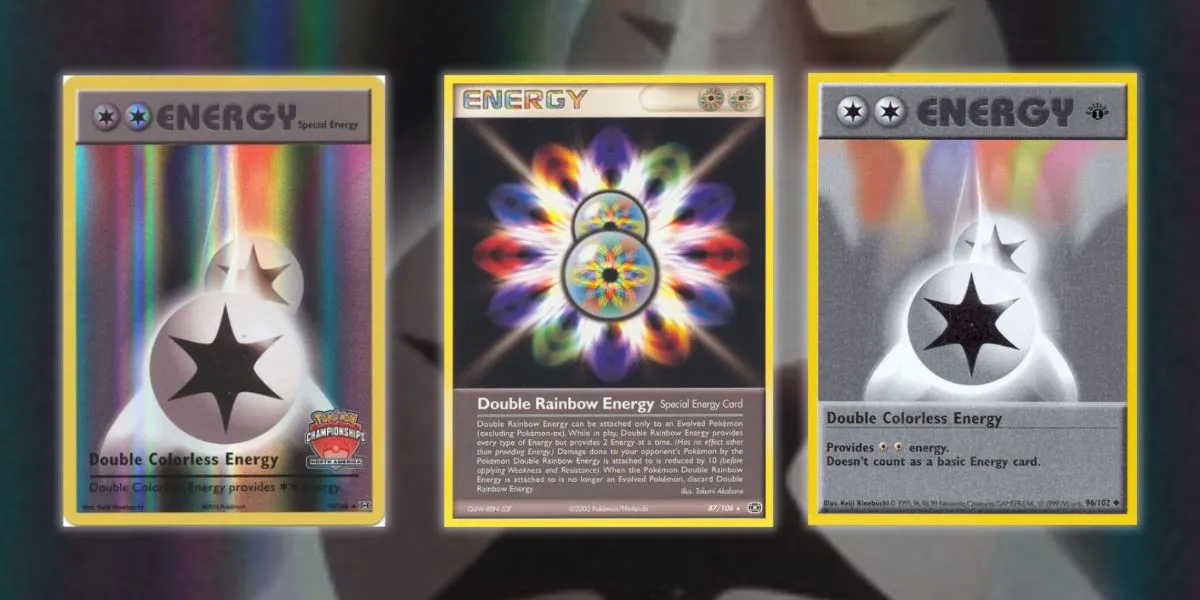
The value of these cards is almost always tied to Standard format legality. Once a card rotates out and loses its gameplay use, its price usually dips hard- unless it’s a fan-favorite or vintage card that holds sentimental value.
Some of the most valuable vintage Special Energy cards include:
Want to know which Energies are worth investing in? Check out our list of the most expensive energies!
2) Hyper Rare Gold Special Energy Cards ($5 to $15)
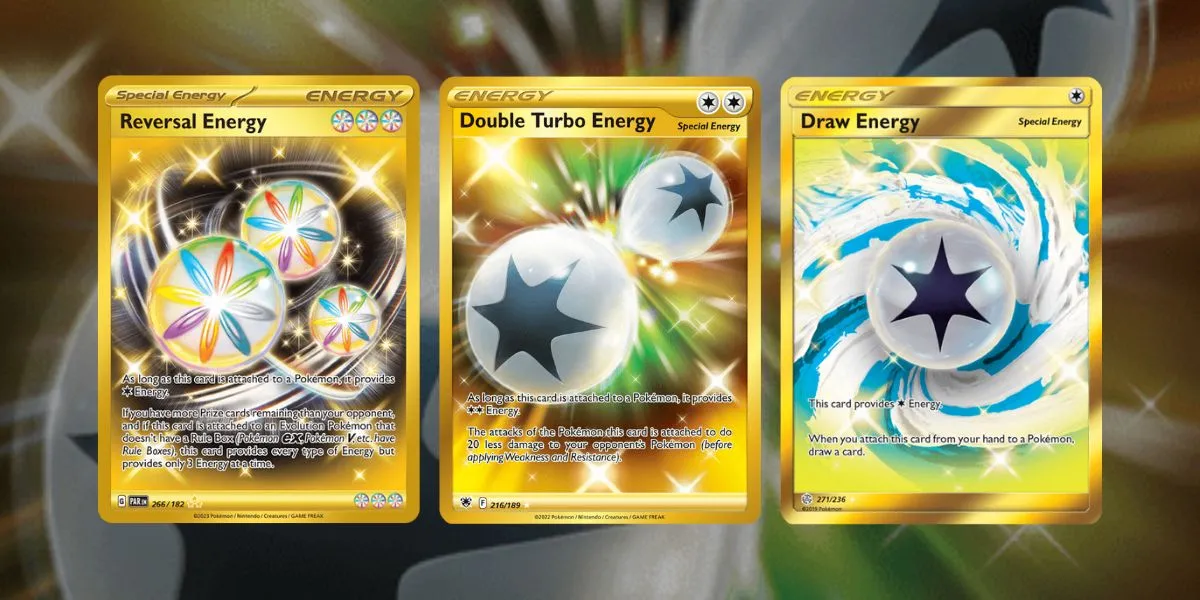
Starting in the Sun & Moon era and continuing strong in Sword & Shield and Scarlet & Violet, The Pokémon Company started printing secret rare (also called hyper rare) Special Energy cards in gold foil, sometimes with textured holo patterns.
They look amazing. They feel premium. But unlike Charizards and waifu Trainers, they’re usually… affordable.
Why?
Because demand is lower. Most players don’t need four shiny Reversal Energies unless they’re really trying to flex at locals. And collectors tend to chase Pokémon, not utility cards.
That said, if you’re trying to build a fully pimped-out deck, gold Special Energies are a great way to add shine without blowing $200.
If you’re on a budget but still want that “blinged-out binder” vibe, gold Special Energy cards are one of the best value options in the game.
3) Ultra Rare ACE SPEC Energies ($1 to 5)
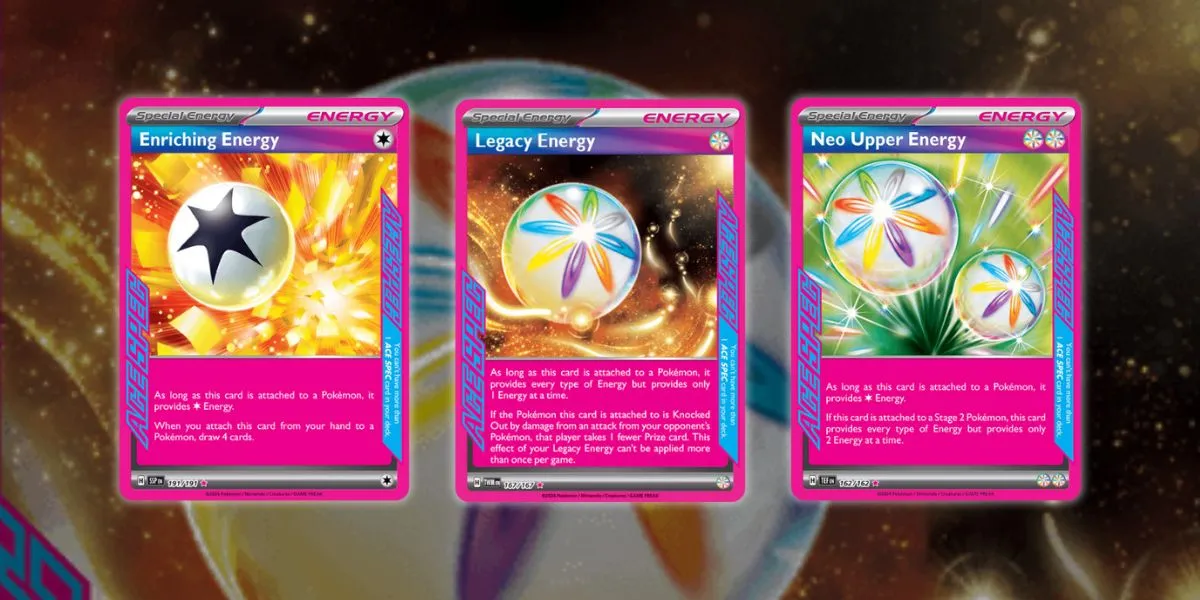
New in Scarlet & Violet’s 2025 format, ACE SPECs come with magenta borders and wild effects- and you can only include one ACE SPEC total in your deck.
Although ACE SPECs are still new, they’re always low print and in high demand for gameplay. But that’s as far as they go in terms of demand.
If ACE SPEC becomes discontinued in future sets, these few cards might attract collector attention later. But for now, they’ll fetch a few dollars in mint condition at best.
FAQ
Kalam is a PTCG gameplay expert and content creator. He started playing and collecting Pokémon cards since 1996. When he’s not working, you can find him nerding out on Anime!
Ready To Level Up At PTCG?

